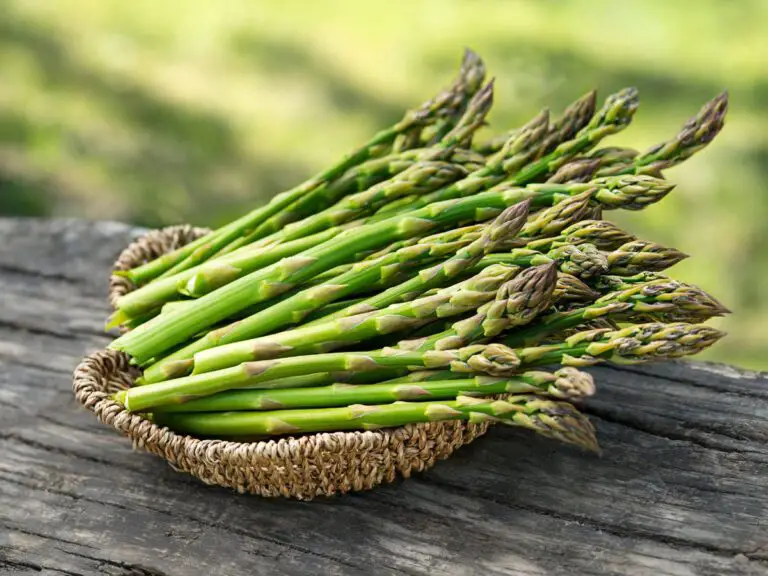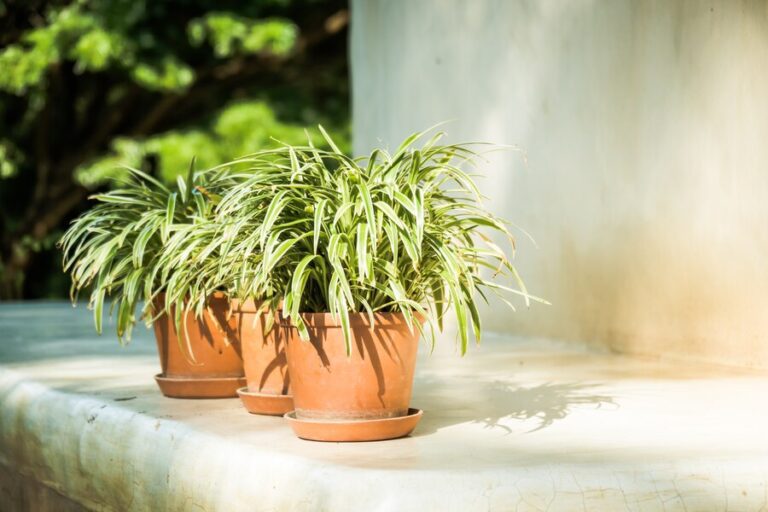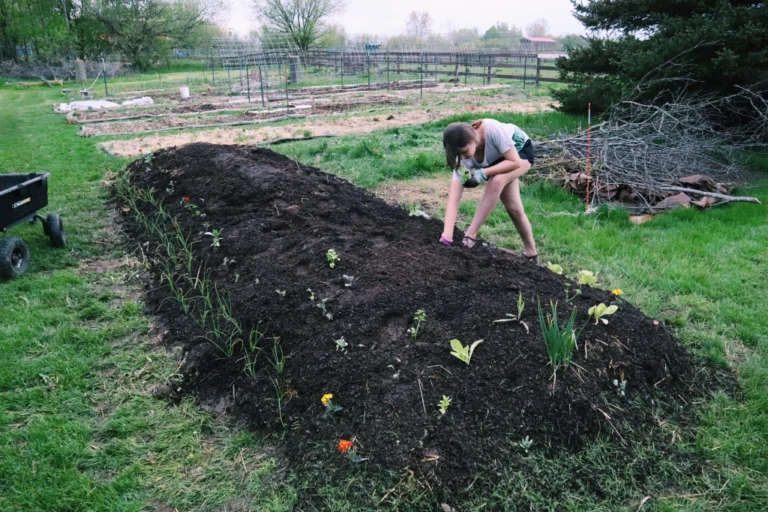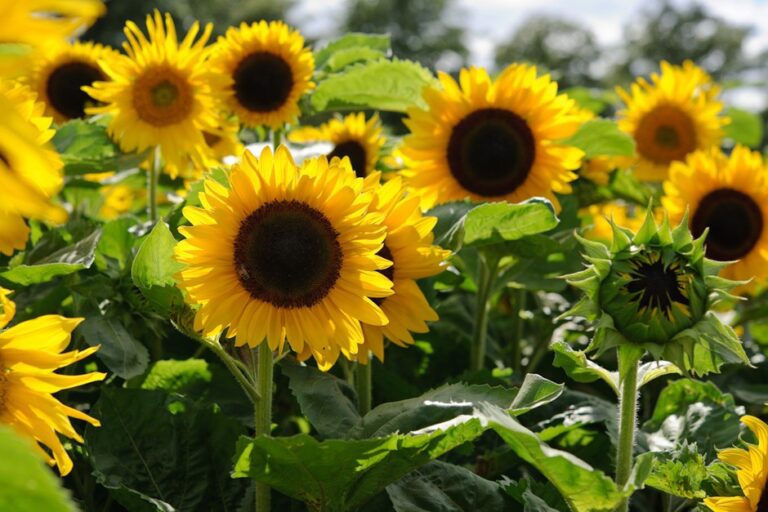Columnar Trees: 12 Varieties You Need to Grow
Did you know that columnar trees can transform even the smallest backyard into a lush, green oasis? These space-saving marvels are perfect for urban gardeners looking to add height and beauty without compromising on space. From the elegant Italian Cypress to the vibrant Scarlet Sentinel Apple, our guide covers 12 must-grow varieties that thrive in the US climate.
Whether you’re a seasoned gardener or just starting out, these trees offer stunning foliage, privacy, and even fruit. Dive into our list and discover how columnar trees can enhance your landscape with minimal effort. Start your green journey today and make your garden the envy of the neighborhood!
Table of Contents
Benefits of Growing Columnar Trees
Columnar trees are a valuable addition to any garden, offering a range of benefits that make them worth considering for both aesthetic and practical reasons. One of the key advantages of growing columnar trees is their space-saving nature.
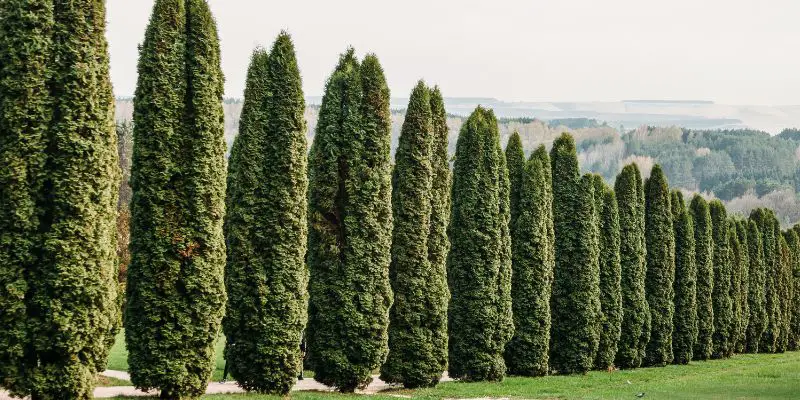
- Understand the benefits of columnar trees:
- Columnar trees have a narrow, upright growth habit, fitting into tight spaces where traditional trees may be too large.
- They provide vertical interest without encroaching on valuable space in small gardens or courtyards.
- Columnar trees can effectively block undesirable views and create privacy with their dense foliage and upright growth.
- Choose the right columnar tree for your needs:
- Select evergreen columnar trees like Italian cypress, holly, or arborvitae for year-round screening.
- Deciduous columnar trees like sweetgum or oak can provide seasonal privacy and interest.
- Consider the mature size, growth rate, and environmental requirements of the tree to ensure it thrives in your space.
- Strategically place columnar trees:
- Position columnar trees to screen specific views or create a secluded outdoor space.
- Use them to line driveways, pathways, or fences, creating a living barrier.
- Avoid planting too close to property lines to prevent issues with overhanging branches.
- Maintain columnar trees:
- Prune regularly to maintain the desired columnar shape and prevent outward growth.
- Water newly planted trees regularly until established, then adjust watering based on the species’ needs.
- Apply mulch around the base to retain moisture and suppress weeds.
By following these steps and selecting the right columnar trees for your needs, you can effectively create privacy, add vertical interest, and make the most of tight garden spaces.
Ideal Climate Conditions for Columnar Trees
Columnar trees are a wonderful addition to any landscape, offering a unique and striking appearance. However, it is crucial to understand the ideal climate conditions for these trees to thrive and reach their full potential. Columnar trees, also known as fastigiate trees, are best suited for regions with moderate temperatures and mild climates.

Temperature Preferences:
- Cool Summers and Cold Winters:
- Evolved to withstand these conditions.
- Require a period of winter dormancy for rejuvenation and spring growth.
Climate Considerations:
- Hot Summers or Prolonged Frost:
- May struggle to survive in extremely hot summers or regions with prolonged frost.
- Essential to consider regional climate conditions before planting.
Sunlight Requirements:
- Full Sun:
- Typically require at least six to eight hours of direct sunlight daily.
- Flourish in areas with adequate sunlight.
Moisture and Soil:
- Well-Drained Soil:
- Prevents waterlogged roots and related diseases.
- Adequate moisture is essential, but excessive moisture can be detrimental.
- Proper Irrigation and Drainage:
- Ensures a healthy balance for the trees.
- Helps maintain optimal moisture levels for growth and health.
Factors to Consider Before Planting Columnar Trees
When considering planting columnar trees, there are several important factors to take into account to ensure successful growth and long-term health. One crucial element to consider is the climate conditions. Columnar trees thrive in specific climatic zones, so it is essential to determine whether your region provides the ideal environment for their growth.
- Assess your climate and growing conditions:
- Examine factors like temperature, sunlight exposure, and rainfall patterns to ensure they align with the requirements of the columnar tree species you intend to plant.
- Consult with local gardening experts or horticultural extension offices for guidance on the most suitable columnar tree species for your area.
- Evaluate the available space and location:
- Consider the mature height and width of the columnar tree species to ensure there is sufficient space for growth.
- Assess factors like proximity to other plants or structures, soil conditions, and wind exposure to determine the optimal location for planting.
- Prepare the soil:
- Amend the soil with organic matter to improve drainage and nutrient content if necessary.
- Ensure the soil is well-draining to prevent waterlogging and promote healthy root growth.
- Plant the columnar tree properly:
- Dig a hole that is two to three times the width of the root ball and only as deep as the root ball.
- Place the tree in the hole and backfill with the original soil, gently tamping it down to remove air pockets.
- Water thoroughly after planting to settle the soil and provide moisture to the roots.
- Provide proper care and maintenance:
- Water the tree regularly, especially during the first year, to establish a deep, extensive root system.
- Apply a layer of mulch around the base of the tree to retain moisture and suppress weeds.
- Prune the tree as needed to maintain its columnar shape and remove any dead or damaged branches.
By following these steps and considering the specific requirements of the columnar trees species you choose, you can successfully select and plant columnar trees that will thrive in your garden or landscape.So, before digging that first hole, take the time to evaluate these crucial factors to ensure the success of your columnar tree planting endeavor.
| Considerations Before Planting Columnar Trees | Description |
| Climate and Sunlight | Ensure the trees match your local climate and sunlight conditions. |
| Soil and Space | Choose well-drained soil and provide adequate space for growth. |
| Size, Height, and Roots | Know the mature size, height, and root characteristics of the trees. |
| Wind and Pest Tolerance | Select trees with good wind tolerance and resistance to pests. |
| Watering and Maintenance | Consider water needs and maintenance requirements. |
| Aesthetics and Compatibility | Think about visual appeal and compatibility with surroundings. |
| Regulations and Long-Term Planning | Check local regulations, permits, and plan for long-term goals. |
Selecting the Right Location for Your Columnar Trees
Selecting the right location for your columnar trees is crucial to ensure their healthy growth and optimal productivity. Columnar trees, with their unique upright growth habit, require ample space and access to sunlight. When choosing a location for your columnar trees, consider the following factors:

1. Sunlight exposure: Columnar trees thrive in full sun conditions, receiving at least six to eight hours of direct sunlight each day. Select a location in your garden that is not shaded by buildings, trees, or other structures that may obstruct sunlight. This will allow your columnar trees to photosynthesize efficiently and produce abundant foliage and fruits.
2. Soil drainage: Good soil drainage is essential for the health of your columnar trees. They prefer well-draining soil that doesn’t retain excessive moisture, as waterlogged soil can lead to root rot and other diseases. Assess the drainage quality of the area you plan to plant your columnar trees in. If the soil tends to pool with water after rainfall, it may be advisable to amend the soil or choose a different location.
3. Wind protection: Although columnar trees are generally more resistant to wind damage than other tree varieties, it is still important to choose a location that offers some protection from strong winds. Consider surrounding structures or existing trees that can act as a windbreak and shield your columnar trees from excessive wind gusts. This will prevent the branches from breaking and ensure the stability of the trees.
By carefully assessing the sunlight exposure, soil drainage, and wind conditions, you can select the ideal location for your columnar trees. Remember, these trees are a significant investment, and providing the right conditions will enhance their growth, longevity, and productivity. In the next section, we will discuss how to prepare the soil adequately to further support the growth of your columnar trees.
Preparing the Soil for Columnar Trees
Preparing the soil is a crucial step in ensuring the healthy growth and development of columnar trees. The quality and composition of the soil have a direct impact on the tree’s ability to absorb nutrients, water retention, and overall root health. Therefore, it is essential to create an optimal environment for the trees to thrive.
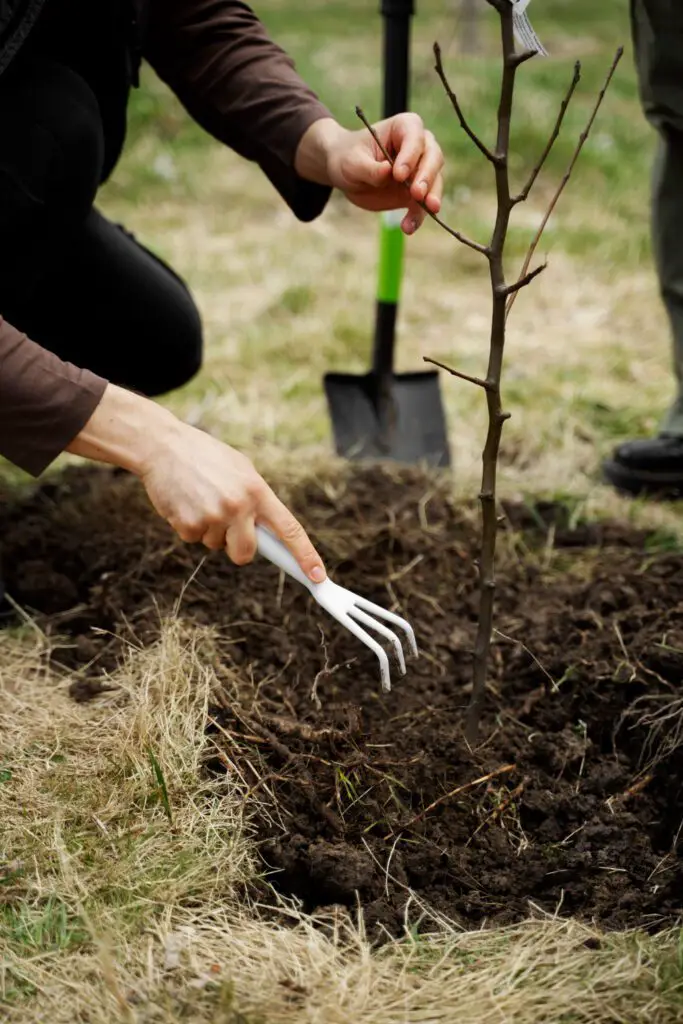
Soil pH Testing and Adjustment:
- Test Soil pH:
- Most columnar trees prefer slightly acidic to neutral soil (pH 6.0 to 7.0).
- Conduct a soil analysis to determine the current pH level.
- Adjusting pH:
- Raise pH (if soil is too acidic): Add lime.
- Lower pH (if soil is too alkaline): Add sulfur.
Improving Soil Structure and Fertility:
- Incorporate Organic Matter:
- Use compost or well-rotted manure.
- Enhances nutrient content and moisture-holding capacity.
- Application Method:
- Spread a layer of organic matter over the planting area.
- Work it into the soil to a depth of at least 12 inches, ensuring even distribution.
Enhancing Soil Drainage:
- Assess Soil Drainage:
- Columnar trees prefer well-draining soil to prevent waterlogged roots.
- Amending Poor Drainage:
- Add materials like sand or perlite to improve aeration.
- Prevents water from pooling around the tree’s roots, reducing the risk of root rot.
By properly preparing the soil with the right pH level, organic matter, and adequate drainage, you are setting the foundation for successful growth and development of columnar trees. After all, healthy soil equals healthy trees. So take the time to invest in your soil, and you will reap the rewards of vibrant and productive columnar trees in your garden.
I used Espoma UL30 Organic Soil Acidifier Fertilizer to balance the pH of my garden soil, and it has been a beneficial addition to my gardening routine. This product effectively lowered the soil pH, making it more suitable for my acid-loving plants like blueberries and hydrangeas. I appreciated that it is made from natural ingredients, ensuring it was safe to use around my pets and children. The added sulfur provided an essential nutrient boost, promoting overall plant health. The application was straightforward, and the product incorporated well into the soil.
However, it does take time to see significant changes, so patience and regular soil pH monitoring are necessary. While the slight odor was noticeable, it wasn’t too bothersome. For larger garden areas, the amount needed can be substantial, but the improved soil health and plant growth make it worth the investment.
Overall, Espoma’s soil acidifier has proven to be a reliable solution for balancing soil pH and promoting healthier, more vibrant plants in my garden.
- pH Adjustment: Effectively lowers soil pH, making it ideal for acid-loving plants.
- Organic: Made from natural ingredients, making it environmentally friendly and safe for use around pets and children.
- Nutrient Boost: Adds essential sulfur to the soil, which is beneficial for plant health and growth.
- Easy Application: Simple to apply and incorporates well into the soil, ensuring even distribution.
- Versatile: Suitable for a variety of plants, including blueberries, hydrangeas, and azaleas.
- Improves Soil Health: Enhances soil structure and nutrient availability, leading to healthier plants.
- Slow Acting: Takes time to see noticeable changes in soil pH, requiring patience and multiple applications.
- Odor: May have a slight odor, which some users might find unpleasant.
- Quantity Needed: Larger areas may require significant amounts of product, increasing cost.
- Frequent Monitoring: Soil pH needs to be monitored regularly to avoid over-acidification.
- Non-Instant Results: Not a quick fix; long-term commitment is needed for best results.
- Potential Overuse: Risk of over-application, which can harm plants sensitive to pH changes.
Planting Techniques for Columnar Trees
When it comes to planting columnar trees, there are a few techniques that can help ensure their successful growth and development.
Step 1: Select a Suitable Location
- Choose a location with full sun exposure and well-draining soil.
- Consider the mature height and width of the columnar tree species to ensure there is sufficient space for growth.
Step 2: Prepare the Soil
- Remove any weeds or grass from the planting area.
- Till the soil to a depth of at least 12 inches to allow the roots to penetrate easily.
Step 3: Plant the Columnar Tree
- Dig a hole that is wide and deep enough to accommodate the root system.
- Gently remove the tree from its container, taking care not to damage the roots.
- Place the tree in the center of the hole and backfill with soil, ensuring no air pockets around the roots.
Step 4: Water and Mulch
- Water the tree immediately after planting to settle the soil and provide initial moisture.
- Apply a layer of mulch around the base of the tree to conserve moisture and prevent weed growth.
Step 5: Provide Ongoing Care
- Water regularly, especially during the first year, to establish a deep root system.
- Fertilize according to the specific needs of the columnar tree species.
- Prune as necessary to maintain the upright growth habit and promote healthy growth.
Overall, planting columnar trees requires careful consideration of factors such as location and soil preparation. By following the proper techniques and giving these trees the care they need, gardeners can enjoy the benefits of these slender and space-saving beauties in their landscapes.
Proper Watering and Irrigation for Columnar Trees
Proper watering and irrigation are essential for the health and vitality of columnar trees. These types of trees have unique growth patterns, with their narrow, upright forms requiring careful attention to their water needs. Adequate watering ensures that they receive the necessary moisture for growth and development, while avoiding the risks of overwatering or underwatering.

- Choose well-draining soil:
- Select a soil that allows excess water to move away from the tree’s roots.
- Poor drainage can lead to root rot and other water-related diseases.
- Sandy soils may require more frequent watering due to their fast-draining nature.
- Determine watering frequency based on factors:
- Use efficient watering methods:
- Monitor soil moisture levels:
By following proper watering and irrigation practices, columnar trees can thrive and provide a beautiful addition to any landscape. It is crucial to remember that each tree species may have specific water requirements, and adapting watering practices accordingly will help ensure their long-term health.
Fertilization Tips for Healthy Columnar Trees
To ensure the healthy growth of your columnar trees, proper fertilization is essential. Fertilizers provide the necessary nutrients that trees need to thrive and produce abundant foliage and fruits. However, applying the right type and amount of fertilizer at the appropriate time is crucial for achieving optimal results.

These ratios provide a well-rounded blend of nutrients that support overall tree health.
Excessive fertilization can harm the tree rather than benefit it.
This timing allows the trees to absorb and utilize the nutrients effectively for optimal growth.
Alternatively, use a liquid fertilizer to ensure direct absorption into the root zone for efficient nutrient uptake.
It’s important to water the trees thoroughly after fertilization to help the nutrients reach the root system effectively. By following these fertilization tips, you can keep your columnar trees healthy and thriving throughout the growing season.
Pruning and Shaping Columnar Trees
Pruning and shaping columnar trees is an essential aspect of their care and maintenance, as it helps to maintain their desired form and promote healthy growth. When it comes to pruning columnar trees, it is important to understand that their unique shape requires a specific approach. Unlike traditional trees, columnar trees have a more upright and narrow form, which means that they require less pruning to maintain their natural shape.
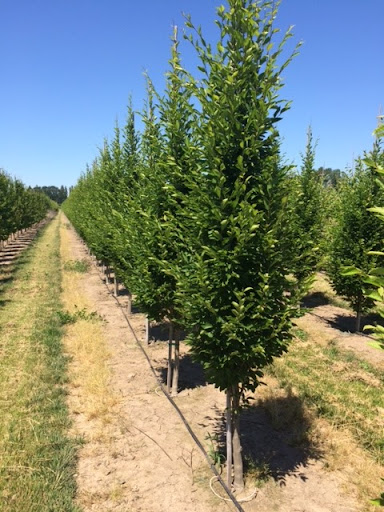
Focus on Removing Dead, Damaged, or Diseased Branches:
- Health Improvement: Removing these branches enhances the overall health of the tree.
- Disease and Pest Prevention: Helps prevent the spread of diseases or pests to healthy parts of the tree.
2. Address Crossing or Rubbing Branches:
- Prevent Damage: Prune branches that cross or rub against each other to avoid potential damage.
- Disease Entry Points: Eliminating these branches reduces the risk of creating disease entry points.
3. Avoid Over-Pruning:
- Natural Growth Pattern: Excessive pruning can disrupt the tree’s natural growth pattern.
- Balanced Appearance: Maintain a balanced and aesthetically pleasing appearance by avoiding over-pruning.
4. Shaping Columnar Trees:
- Maintain Desired Shape: Regular shaping is crucial for preserving the tree’s upright and compact form.
- Trim Lateral Branches: Gently trim lateral branches to encourage vertical growth.
- Column-Like Appearance: Focus on maintaining the tree’s narrow and column-like appearance through careful shaping.
5. Pruning Timing and Tools:
- Optimal Timing: Prune during the tree’s dormant season, typically in late winter or early spring, to minimize stress.
- Use Proper Tools: Ensure you use clean, sharp pruning tools to make precise cuts and avoid causing unnecessary damage.
By shaping and maintaining columnar trees properly, gardeners can ensure that the trees not only enhance the overall aesthetic of their landscape but also thrive in a healthy and balanced manner.
Common Pests and Diseases Affecting Columnar Trees
One of the challenges that gardeners may encounter when growing columnar trees is the presence of common pests and diseases.
| Pest/Disease | Symptoms | Treatment | Effects on the Plant |
|---|---|---|---|
| Aphids | Yellowing leaves, distorted growth, sticky honeydew, sooty mold | Insecticidal soap, neem oil, release of ladybugs or lacewings | Reduced photosynthesis, stunted growth, potential spread of viruses |
| Scale Insects | Bumpy, waxy, or cottony coverings on branches and leaves | Horticultural oil, insecticidal soap, pruning infested areas | Leaf drop, reduced vigor, branch dieback |
| Spider Mites | Yellow or bronze speckling on leaves, fine webbing, leaf drop | Miticides, water spray to dislodge mites, introducing predatory mites | Defoliation, reduced photosynthesis, weakened plant |
| Canker Diseases | Sunken, discolored lesions on stems and branches, oozing sap | Pruning affected areas, improving tree health, applying fungicides | Branch dieback, structural weakness, possible tree death |
| Powdery Mildew | White, powdery fungal growth on leaves and stems | Fungicidal sprays, proper spacing for air circulation, removing infected parts | Reduced photosynthesis, stunted growth, premature leaf drop |
| Fire Blight | Blackened, wilted leaves and branches, often forming a “shepherd’s crook” | Pruning infected areas, applying bactericides, choosing resistant varieties | Rapid wilting and death of branches, potential whole tree loss |
| Leaf Spot Diseases | Brown or black spots on leaves, yellowing, premature leaf drop | Fungicides, removing fallen leaves, improving air circulation | Reduced vigor, defoliation, weakened plant |
| Borer Insects | Tunnels under bark, sawdust-like frass, weakened branches | Systemic insecticides, pruning infested branches, applying tree banding | Structural damage, branch dieback, increased susceptibility to disease |
| Rust Diseases | Orange or reddish pustules on leaves, stems, and fruit | Fungicides, removing infected leaves, choosing resistant varieties | Reduced photosynthesis, premature leaf drop, aesthetic damage |
| Root Rot (Phytophthora) | Wilting, yellowing leaves, stunted growth, brown roots | Improving drainage, fungicide soil drench, avoiding overwatering | Root decay, poor nutrient uptake, potential plant death |
It is important to promptly and properly diagnose these diseases to implement appropriate treatment measures. This may involve pruning and removing infected parts, applying fungicides or bactericides, or improving overall tree health through proper watering, fertilization, and soil management. Regularly monitoring the trees for signs of disease and maintaining optimal growing conditions can go a long way in preventing and managing these common issues affecting columnar trees.
I used Monterey Garden Horticultural Oil Concentrate to combat a persistent aphid problem in my garden, and it worked quite effectively. The oil controlled not only aphids but also other pests like mites and whiteflies, making it a versatile solution for various plants, including my fruits, vegetables, and ornamentals. One of the major benefits was its safety profile—it’s low in toxicity, making it safe to use around my family and pets, and it doesn’t harm beneficial insects when applied correctly.
The concentrate is easy to mix and apply, which was convenient. However, I found that it required frequent reapplication to keep the pests at bay, and it was less effective during hot weather. The application process is also quite thorough, needing complete coverage to be effective, which can be time-consuming. Additionally, it left a slight oily residue on the plants, and the odor during application was noticeable but not overpowering. Despite being a bit pricier, its effectiveness and eco-friendliness made it a worthwhile investment for my garden’s health.
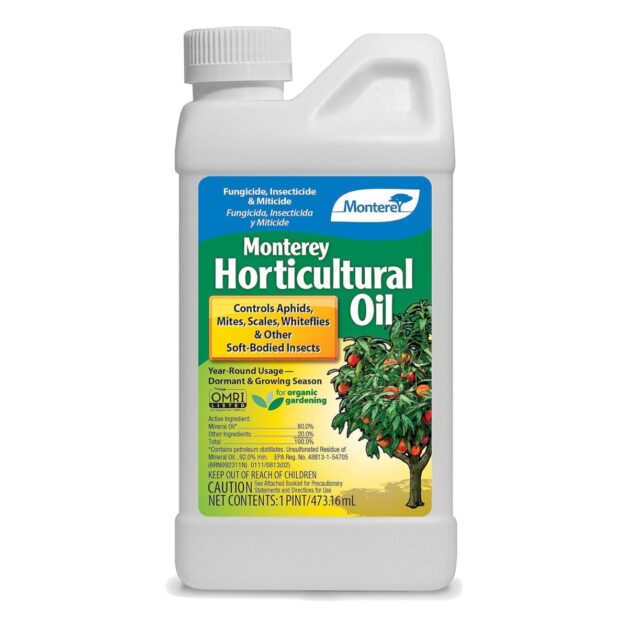
✅ Versatile: Suitable for use on various plants, including fruits, vegetables, ornamentals, and indoor plants.
✅ Safe for Beneficial Insects: Generally safe for beneficial insects like bees when used as directed.
✅ Non-Toxic: Low toxicity to humans and pets, making it safe for home gardens.
✅ Easy to Use: Concentrate form allows for easy mixing and application.
✅ Eco-Friendly: Biodegradable and less harmful to the environment compared to synthetic pesticides.
❌ Temperature Sensitive: Less effective in extreme temperatures; can potentially harm plants if used incorrectly.
❌ Leaves Residue: Can leave an oily residue on plants, which may be unsightly.
❌ Coverage: Needs thorough coverage for best results, which can be time-consuming.
❌ Odor: Some users might find the smell unpleasant during and after application.
❌ Cost: May be more expensive than other pest control options, especially for large areas.
How to Protect Columnar Trees from Winter Damage
During the winter months, columnar trees can be vulnerable to various types of damage, including freezing temperatures, ice accumulation, and strong winds. To protect your columnar trees from winter damage, there are several steps you can take.
- Insulate the Trunk:
- Wrap the tree trunk with burlap or tree wrap to protect the delicate inner tissues from extreme cold temperatures.
- This insulation acts as a barrier against freezing winds and helps prevent frost cracks and sunscald.
- Apply Mulch Around the Base:
- Spread a thick layer of organic mulch, such as wood chips or shredded leaves, around the base of the tree.
- The mulch helps insulate the roots and regulate soil temperature.
- It also helps retain moisture, which is essential for the tree’s health during the winter.
- Ensure Adequate Hydration:
- Deeply water the tree before the ground freezes to ensure the roots have sufficient moisture during the dormant season.
- Trees still require regular watering during the winter, especially if there is insufficient rainfall or snowfall.
- Inspect for Damage:
- Regularly check the columnar trees for any signs of damage, such as broken branches or split bark.
- Promptly address any issues by pruning or applying tree wound dressing to prevent further harm.
By implementing these protective measures, you can greatly reduce the risk of winter damage to your columnar trees and ensure their long-term health and survival. Remember, a small investment of time and effort now can go a long way in preserving the beauty and vitality of your trees for years to come.
| Winter Protection Measures | Description |
| Choose Hardy Tree Varieties | Select columnar tree varieties that are hardy and well-suited to the local climate. |
| Proper Site Selection | Plant columnar trees in well-drained soil and avoid low-lying areas prone to frost pockets. |
| Mulching Around the Base | Apply a layer of organic mulch, such as wood chips or straw, around the base of the tree. |
| Mulch helps insulate the soil, regulate temperature, and reduce frost heaving. | |
| Watering Before Winter | Ensure the tree is well-hydrated going into winter, as hydrated trees are more resilient to freezing temperatures. |
| Water deeply before the ground freezes to provide ample moisture for the dormant season. | |
| Anti-Desiccant Sprays | Apply anti-desiccant sprays to evergreen columnar trees to reduce moisture loss through leaves. |
| Follow product instructions for application, typically in late fall or early winter. | |
| Windbreaks for Protection | Plant windbreaks, such as shrubs or fencing, on the windward side of the columnar tree. |
| Windbreaks help reduce the impact of drying winter winds on the tree. | |
| Wrapping the Trunk | Wrap the trunk of young columnar trees with burlap or tree wraps to prevent sunscald and rodent damage. |
| Wrap from the base to the lower branches, providing a protective barrier. | |
| Protecting Against Frost Cracks | Apply tree guards or wraps to prevent frost cracks on the trunk caused by rapid temperature changes. |
| Tree guards also deter rodent damage, such as gnawing on bark. | |
| Snow Accumulation Management | Gently brush off heavy snow accumulation from branches to prevent breakage. |
| Use a broom or soft brush and work upwards to avoid causing additional damage. | |
| Avoid Pruning in Late Fall | Refrain from major pruning in late fall, as it may stimulate new growth vulnerable to winter damage. |
| Instead, conduct routine pruning in late winter or early spring. | |
| Protecting Against Salt Damage | Shield columnar trees from road salt spray by placing burlap or protective barriers on the windward side. |
| Rinse off salt deposits from the foliage and trunk with water when possible. | |
| Monitoring Tree Health | Regularly inspect the columnar tree for signs of winter damage, such as broken branches or split bark. |
| Promptly address any issues to prevent further damage and promote recovery. |
Harvesting and Utilizing the Fruits of Columnar Trees
When it comes to columnar trees, one of the most exciting aspects is the opportunity to harvest and utilize their fruits. With their narrow, upright growth habit, columnar trees are ideal for small spaces and can still produce an impressive bounty of fruits. Whether you choose apple, pear, cherry, or any other variety, proper harvesting techniques will ensure that you make the most of your hard work.

1. Determine Ideal Harvest Time:
- Visual Cues: Observe color changes, firmness, and aroma specific to each fruit variety.
- Apples: Look for deeper, more vibrant color and slight softness.
- Pears: Check for slight yielding to pressure, rather than color change.
- Consult Resources: Familiarize yourself with the specific characteristics of the fruit variety and consult gardening experts or resources for accurate timing.
2. Handle Fruits with Care:
- Gentle Handling: Gently twist or lift the fruit to avoid damage.
- Proper Tools: Use clean, sharp pruners or shears to cut the stem about 1/2 inch above the fruit.
3. Reduce Risk of Disease and Pests:
- Clean Cuts: Ensure pruners or shears are clean to minimize disease risk.
- Stem Cutting: Proper cutting promotes better healing of the tree.
4. Post-Harvest Storage:
- Cool, Dry Place: Store fruits in a cool, dry place to extend shelf life.
- Utilization: Enjoy the fruits fresh or use them for canning, preserving, or baking.
By following these guidelines, you can effectively harvest the fruits from your columnar trees, ensuring optimal ripeness, minimizing damage, and maximizing enjoyment.
Landscaping Ideas and Design Tips for Columnar Trees
When it comes to landscaping with columnar trees, there are several design tips and ideas that can help create a visually appealing and cohesive outdoor space. One key aspect to consider is the height and placement of the trees.
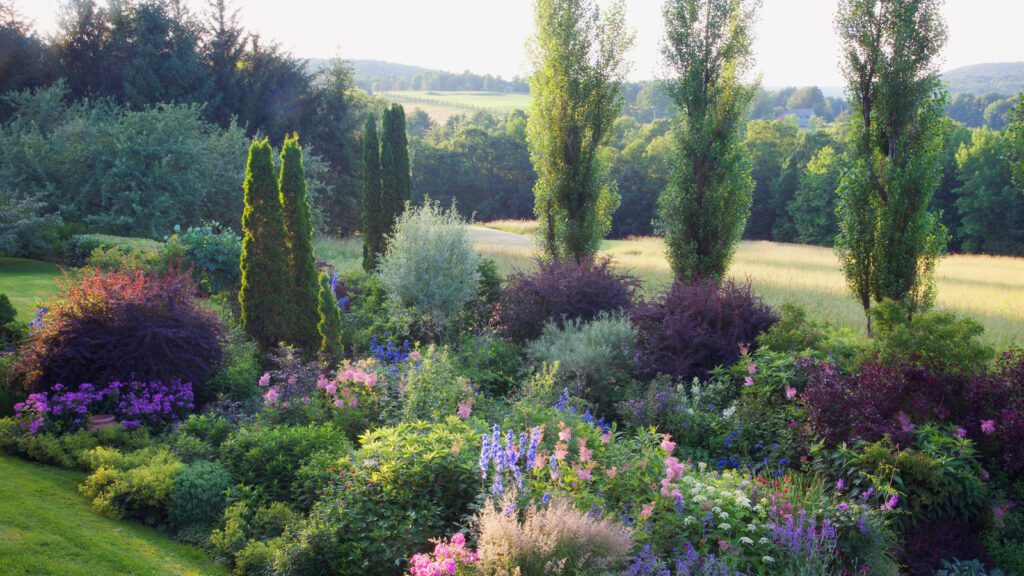
- Selecting and Placing Columnar Trees:
- Choose columnar trees of varying heights to line pathways, frame entrances, or create vertical focal points in the garden.
- Strategically plant the trees to add depth and dimension to the landscape design.
- Consider Color and Texture:
- Select columnar tree varieties with contrasting foliage colors, such as vibrant greens, golden yellows, or deep purples, to create visual interest throughout the seasons.
- Choose trees with unique bark patterns or interesting leaf textures to enhance the visual appeal of the landscape.
- Climate Considerations:
- Carefully consider the climate conditions of your location before planting columnar trees.
- Select tree varieties that are well-suited to your region’s climate to ensure their longevity and health.
- Proper Planting Techniques:
- Prepare the soil well, ensuring it is rich in organic matter and well-draining.
- Plant the columnar trees at the appropriate depth and spacing, following the specific guidelines for each tree species.
- Provide Adequate Care:
- Water the trees regularly, especially during the establishment phase, to ensure proper hydration.
- Apply appropriate fertilization based on the tree’s needs and the soil conditions.
- Regularly prune and shape the trees to maintain their upright form, prevent overcrowding, and reduce the risk of pests and diseases.
- Consult with Experts:
- Seek guidance from local experts or nurseries to select the right columnar tree varieties for your specific climate and landscape needs.
- Consult with professionals for advice on proper planting techniques, care, and maintenance practices.
By following these steps and implementing proper planting, care, and maintenance techniques, you can successfully cultivate and enjoy the benefits of columnar trees in your garden, creating a visually appealing and functional landscape design.
For more information watch the video:
FAQ
Can columnar trees be grown in all climates?
No, columnar trees thrive best in temperate climates with mild winters and moderate rainfall.
What are some factors to consider before planting columnar trees?
Before planting columnar trees, it is important to consider factors such as soil type, available space, sunlight exposure, and potential obstructions.
How should I prepare the soil for planting columnar trees?
To prepare the soil for columnar trees, ensure it is well-drained and fertile. Adding organic matter, such as compost, can improve soil quality.
What are the proper watering and irrigation techniques for columnar trees?
Columnar trees require regular watering, especially during the first few years of growth. Deep and infrequent watering is recommended to encourage deep root growth.
How often should I fertilize columnar trees?
Columnar trees benefit from annual fertilization in early spring. Use a balanced fertilizer and follow the instructions on the product label.
How do I prune and shape columnar trees?
Pruning columnar trees is typically minimal, but it is important to remove any dead or damaged branches. Shaping can be done by selectively pruning to maintain the desired form.
What are some common pests and diseases that affect columnar trees?
Columnar trees can be susceptible to pests such as aphids, caterpillars, and borers. Diseases like powdery mildew and apple scab can also affect them.
How can I protect columnar trees from winter damage?
Winter protection for columnar trees can be achieved by wrapping the trunk with burlap, applying mulch around the base, and avoiding excessive pruning before winter.
When is the ideal time to harvest the fruits of columnar trees?
The timing of fruit harvest varies depending on the specific tree species. Generally, it is best to harvest when the fruits are fully ripe and easily detach from the tree.
Are there any specific landscaping ideas or design tips for columnar trees?
Columnar trees are versatile and can be used to create vertical accents, privacy screens, or even as a focal point in a garden. Consider their height and form when planning your landscape design.

Studied Agricultural Engineering-Plant Protection at University of California, Davis.
Head of Content writing team at Southelmontehydroponics.com



